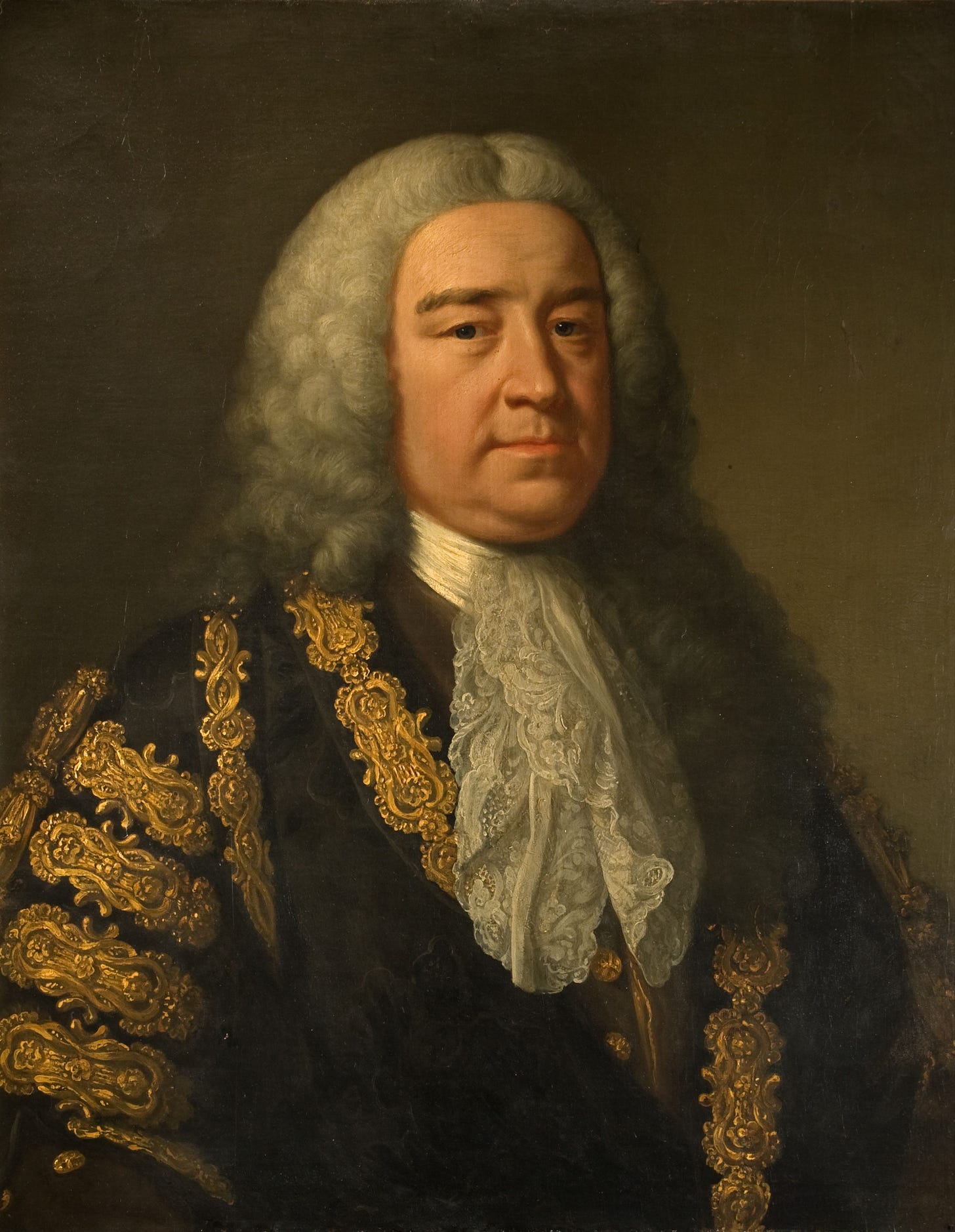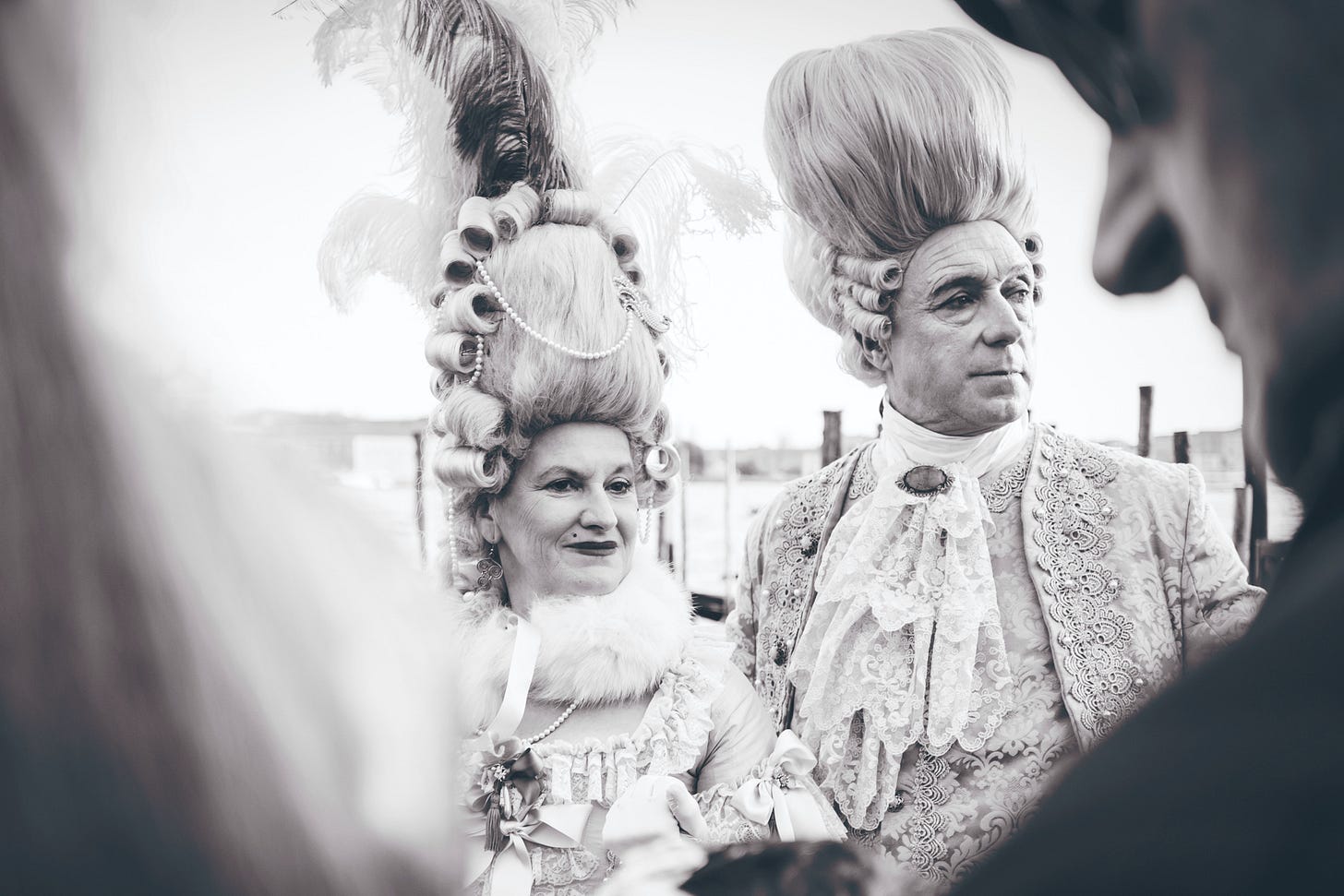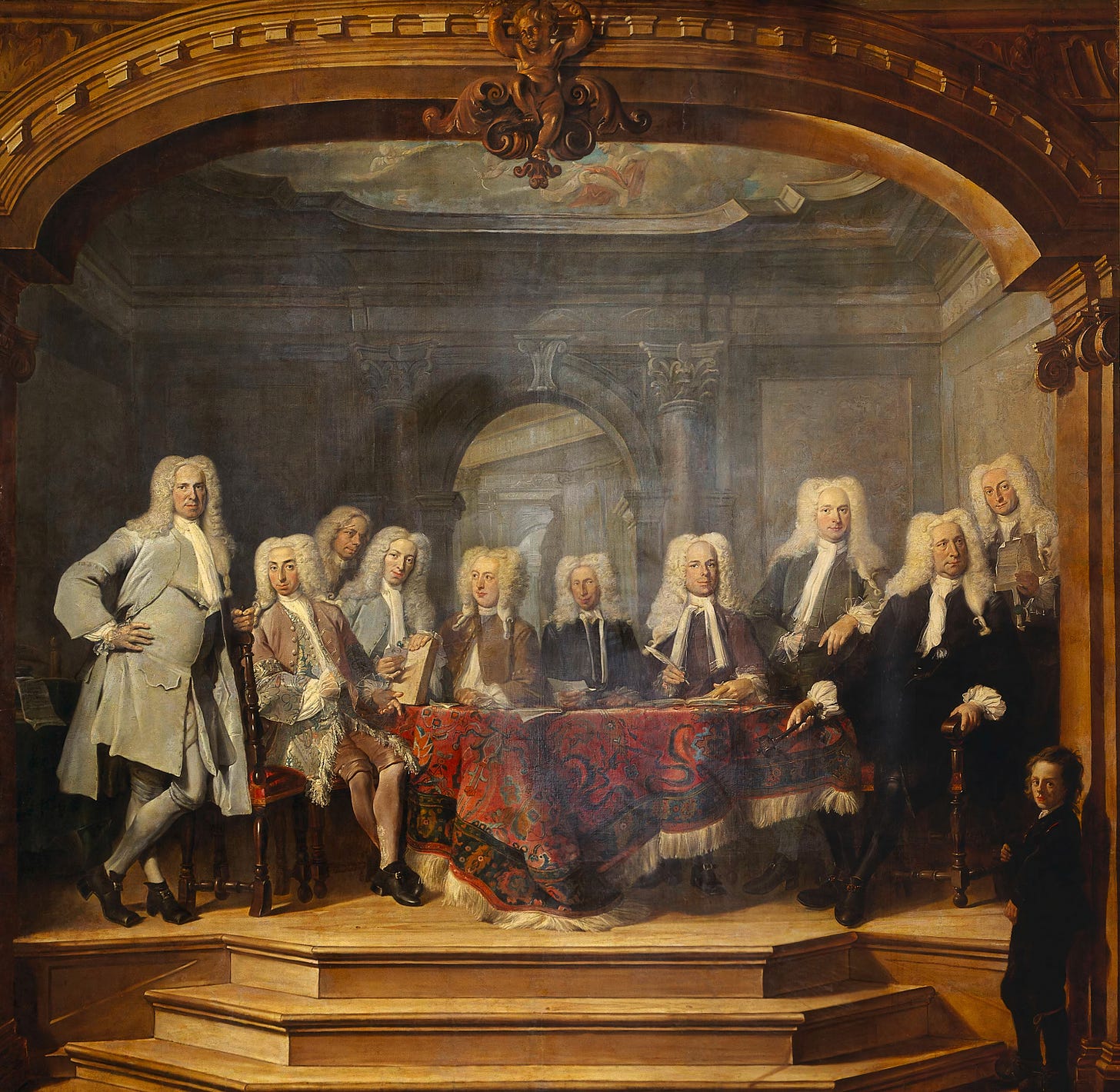The Bizarre History of the Powdered Wig
Was wearing a wig in 18th century Europe all about fashion and flaunting wealth? Was there something deeper, more embarrassing truth that people were trying to conceal beneath the fashionable wig?
An 18th-Century Fashion Craze
They are ubiquitous in most old paintings.
You find exquisitely dressed people of the 18th century in these paintings wearing perfectly coiffed-powdered wigs, a symbol of status, affluence, and luxury that pervaded throughout Europe in those times.
Yes, to our modern tastes, they appear quite preposterous, but then fashion trends of the 18th century were excessively pompous and sometimes boastfully fake.
For men, wig-wearing was all about vanity. For women, it was employed as a means of trickery to ensnare a ‘good’ (read rich) husband.
Indeed, wigs became such a rage that hairdressers of that age came up with colorful euphemisms like ‘gentlemen’s invisible perukes’ or ‘ladies’ imperceptible hair coverings’ as sarcastic puns aimed at a ‘wig-obsessed’ nobility.
And wigs, or perukes as they were called, were convenient because they were relatively easy to maintain and only needed to be sent to a wigmaker for an occasional delousing. With time and popularity, they became a status symbol for people to flaunt their wealth.
An everyday wig cost 25 shillings, while the ‘bigwigs’ of that era would spend upwards of 800 shillings on wigs. In 1700, 800 shillings were approximately $11,000 in today’s currency.
Big money. Isn’t it? But then, was wearing a wig all about fashion and flaunting wealth? Was there something deeper, more embarrassing truth that people were trying to conceal beneath the fashionable wig?
Yes, as it turns out, the history of the peruke is awfully bizarre.
The Story of the Powdered Wig
In the 18th century, hairlines were important– a good hairline was the mark of a well-bred man. Unfortunately, it was also the time when syphilis was on the rise.
Syphilis became the worst epidemic to strike Europe since the Black Death. And without any guaranteed antibiotics or medication, victims helplessly bore the full brunt of the disease, ravaged by symptoms like open sores, nasty rashes, blindness, dementia, and patchy hair loss. Baldness became common among men and women, and hair loss became a sign of public embarrassment and ‘reputation loss.’
As the diarist of Samuel Pepys writes, when his brother contracted syphilis.
“If [my brother] lives, he will not be able to show his head—which will be a very great shame to me.”
Thus, wigs came into existence to hide the symptoms of the disease. Victims began to hide their baldness and the bloody sores that scoured their faces with wigs made of horse, goat, or human hair. It was not stylish. Rather it was just a shameful necessity.
But this changed in 1655 when the King of France, Louis XIV, started losing his hair.
Louis XIV was only 17 when he started losing his hair. To save his reputation, the king hired 48 wigmakers to save his image.5 years later, another womanizer, King Charles II, started losing his hair and did exactly the same thing as his French counterpart.
Courtiers across both sides of the channel were impressed and started copying their kings. They started sporting wigs, and the style soon trickled down to other lower classes. Europe’s newest fashion fad was born.
Wigs became big business. Originally made from horse, goat, or human hair, wigs soon became expensive accessories and a visible status symbol to flaunt wealth. By 1771, there were nearly 1000 wigmakers in France alone.
And women were also not far behind. From the mid to late-1770s, powdered wigs became popular for women. The towering hairstyles were created using a thin metal frame and a cushion or toque as support.
False hairpieces were intertwined with a woman’s real hair and piled high above the head, and once the style was finished, the hair was powdered, and decorations were added. As Mary Frampton, a woman stylist of those times, writes.
“At that time everybody wore powder and pomatum; a large triangular thing called a cushion, to which the hair was frizzed up with three or four enormous curls on each side; the higher the pyramid of hair, gauze, feathers, and other ornaments was carried the more fashionable it was thought, and such was the labor employed to rear the fabric that night-caps were made in proportion to it and covered over the hair, immensely long black pins, double and single, powder, pomatum and all ready for the next day. I think I remember hearing that twenty-four large pins were by no means an unusual number to go to bed with on your head.”
The powder used was actually to keep the wigs from smelling as such elaborate wigs became notoriously difficult to clean. Hair powder consisted of flour or starch and could be dyed in various colors depending on an individual’s wants or needs. The powder could then be scented with various roots and flowers, such as citrusy orange flowers and lavender.
Soon the wig and the powder became quite heavy, as the bewigged had to learn how to balance the elaborate perukes as they walked. The wigs became synonymous with high aristocracy and the utmost decadence of wealth and power.
Wigs Become Out of Fashion
By the late 18th century, the wigs started dying as the Age of Enlightenment brought a new mentality, where educated men became more concerned with the plight of the common man. All extravagant expenditures were abhorred and considered symbols of exploitation and injustice.
The newly minted intellectual rich did not want to be seen as exploitative or mean, and soon donning a wig became the ultimate symbol of physical as well as ‘moral’ deception. French citizens ousted the peruke during the Revolution, and the British stopped wearing wigs after William Pitt levied a punishing tax on hair powder in 1795. Short, natural hair became the new craze.
Yes, wigs are not worn today except for purely ceremonial purposes by British judges and barristers. However, fashion is always cyclical, so the big wig may return in style like the others someday! We never know!






